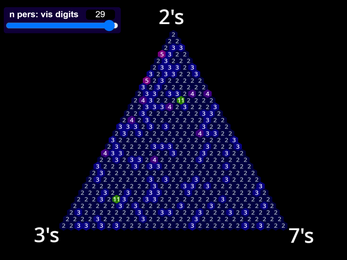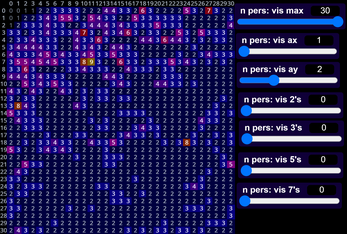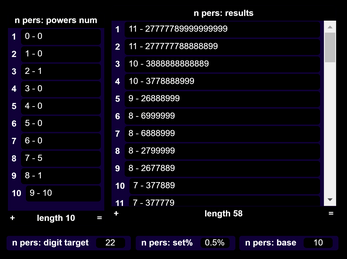Multiplicative persistence
Pick any integer to start with and multiply all its digits together. Keep doing this with each new number until there is only one digit. The persistence is the amount of steps taken. Which numbers take the most steps?
This project checks the multiplicative persistence of large numbers and visualises the problem. The drawings focus on numbers that only use the digits 2, 3, 5 and 7. I didn't want the drawing to be fast because that caused incorrect persistence values somehow.
After answering the setup questions, press Q to restart the project, V for a custom visualisation setting and space to redraw.
Fun facts: Every number can be reduced to a simplified version that will have the same persistence value. 2's can be grouped into 4's and 8's, 3's can be grouped into 9's etc. You only need to start with nothing, 2, 3, 4, 6 or 26, then you can add as many of the digits 5, 7, 8 and 9 as you want. The order doesn't matter either, so I just sort the digits by their value. As mentioned before, they can also be expanded to only use the prime digits.
Note: The square visualisation's axes sliders use 1 for 2, 2 for 3, 3 for 5 and 4 for 7.




Leave a comment
Log in with itch.io to leave a comment.